Engelman spruce: description, varieties and cultivation

Conifers today are a fairly common type for landscaping areas, and are also widely used in construction and furniture manufacturing. It is for this reason that today on the market you can find a very large number of very different varieties and types of conifers. Among them, the Engelman spruce can be noted.
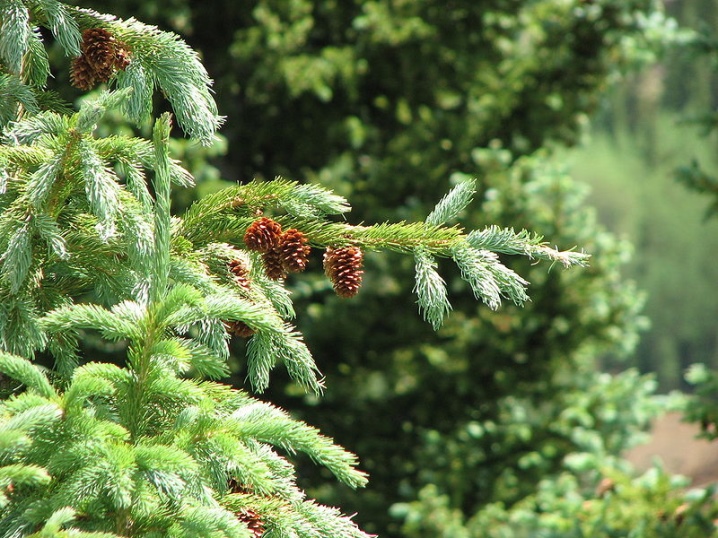
Description
The tree bears the name of the German scientist T. Engelmann. It is an evergreen plant from the pine family. In nature, spruce grows in mixed forests, neighbors not only with other conifers, but also gets along with deciduous trees. The birthplace of the tree is America. But today it is already widespread throughout the northern hemisphere of the planet.
In our country and Europe, spruce began to be planted only at the beginning of the 19th century. This tree has a rather aesthetic appearance, it is for this reason that Engelman spruces are often planted in our parks and squares.
The life span of a tree is very high, it can live up to 500 years, while growing up to 50-60 m in height. This species is quite frost-resistant, can withstand frosts down to -47 °.
The crown of the tree is not spreading, the diameter of the tree usually does not exceed 1 m. The bark of all varieties of this species is scaly, thinner than that of other conifers, has a light brown color, which gives off a reddish tint.
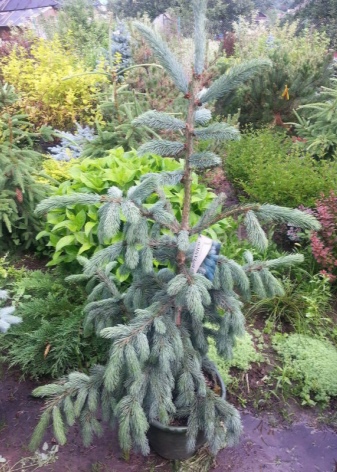

The spruce needles are peculiar: they have a four-sided shape, in length they reach no more than 2.5 cm.
They have a very interesting pale blue color, which varies slightly depending on the variety.
Cones are also not very large, the largest are about 6-8 cm long. They are cylindrical and light brown in color. They ripen in one season; by the beginning of autumn, seeds are already ready in them.
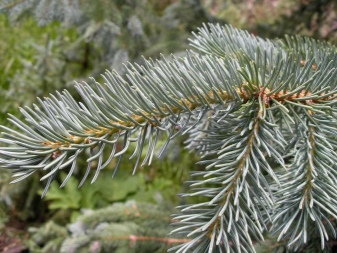
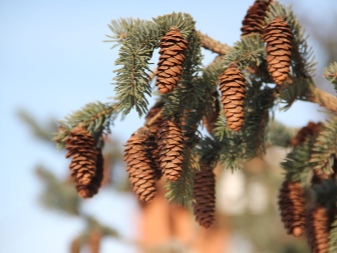
Agrotechnics
In natural conditions, as a rule, reproduction takes place by spreading seeds, and people plant seedlings in their gardens. The tree is not demanding on the climate and soil conditions when planting. It grows well even on calcareous soil. One of the rules to follow is not to plant the tree in a place that will be constantly in the shade. The tree loves sunlight.
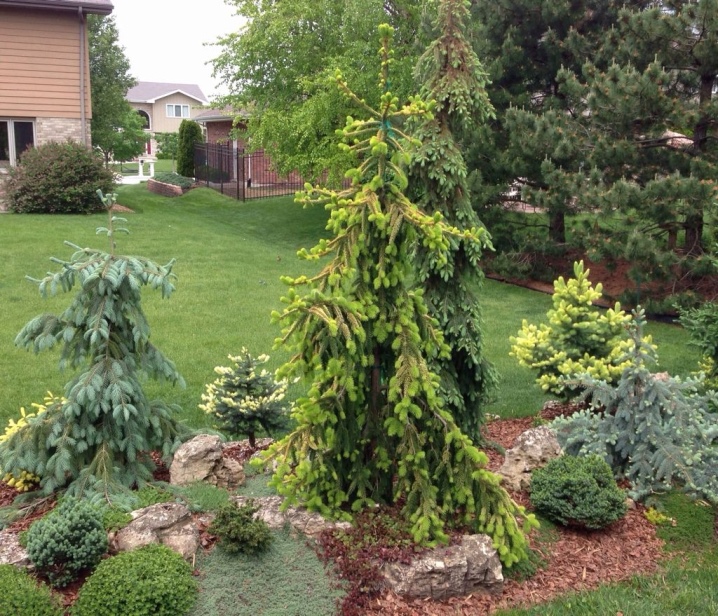
And also when planting, it is necessary to arrange a drainage system, sprinkle with fertile soil. When filling up the root system, a mixture of peat, leaf and sod soil and sand should be used. This is done in order for the tree to take root better. Trees should be planted at a distance of 3 m from each other, otherwise they will interfere with each other as they grow.
Immediately after planting, the tree needs to be watered once a week, and it also needs to be fed at the rate of 150 g of nitroammophos fertilizer per 1 tree. The crown must be looked after: it must be sprayed with water. This helps to wash away dust and fuel the needles. Once every few weeks, the soil must be loosened and sprinkled with peat.
Only seedlings that are less than 1.5 m need to be prepared for wintering.
To do this, it is necessary to put shields protecting the seedling from the wind from the north side, wrap the tree in several layers with agrofibre, cover the roots with leaves and earth.
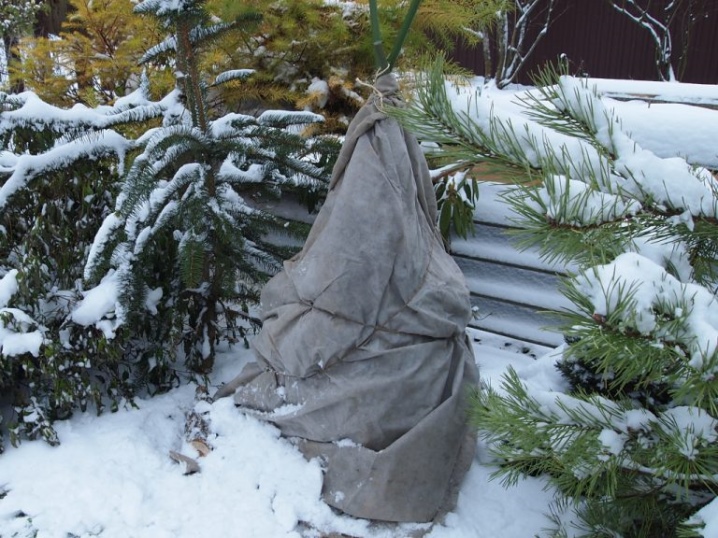
Pests
There are several types of pests, which are extremely dangerous for the life of a coniferous plant.
- Aphid Sitka. The insect is small in size, reaching a maximum of 2 mm, it is practically invisible to the naked eye. To find it, you need to put a white sheet of paper under the bush and shake the bushes.To combat this insect, clean or soapy water is used, with which infected and healthy plants are washed. In this case, you need to ensure that soapy water does not get on the roots of the plant.
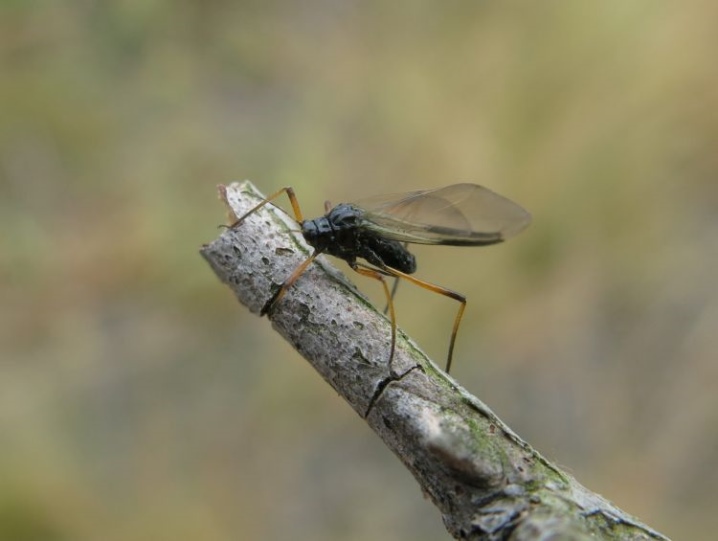
- Needle-eater, spruce leaf roll. Caterpillars are very small in size, which eat the needles of the plant, while covering it with a cobweb that holds the needles. But at the slightest gust of wind, the needles crumble, the tree remains bare. To combat this pest, soapy water is also used, with which infected bushes are washed. And also there is an option to completely remove the affected areas, provided that the plant has just begun to hurt.
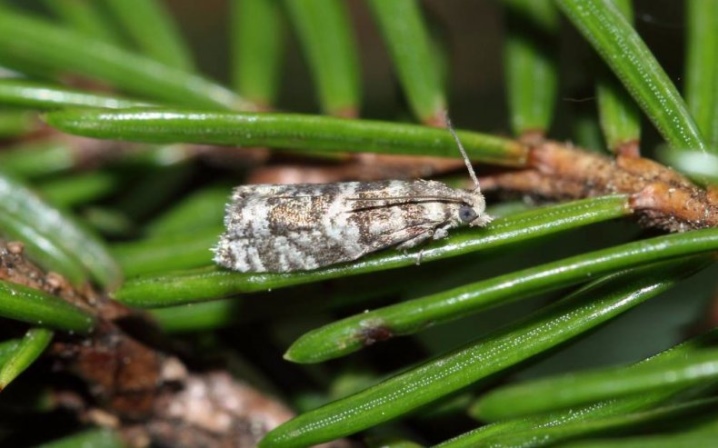
- False shield. It spreads mainly on young plants, attacks in colonies, sucking all the juices from the tree. If this happens, young trees die, older trees slow down their growth, their crown shape is deformed. To prevent a tree from being attacked by a pest, it must be properly planted: a false shield attacks plants that grow in the shade.
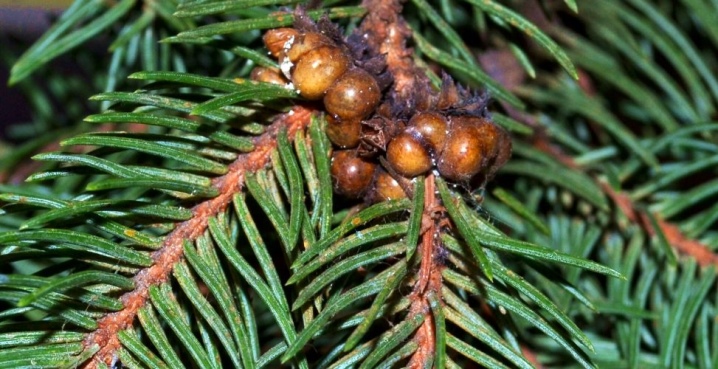
Application
Such a tree can often be found abroad in gardens and parks. It looks great when planted alone, separate from other trees. But at the same time, it does not lose its beauty if it grows next to a small number of other bushes. It is often used to create alleys and parks.
This spruce, unlike other types of conifers, is practically not used in the construction and manufacture of furniture, but it is widely used in medicine.
Since ancient times, people have used conifers to maintain health, to prevent diseases, used as an antimicrobial, disinfectant.
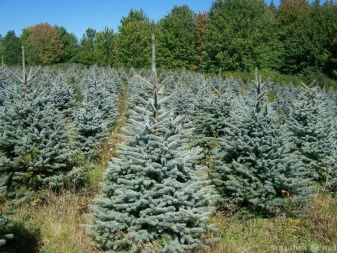
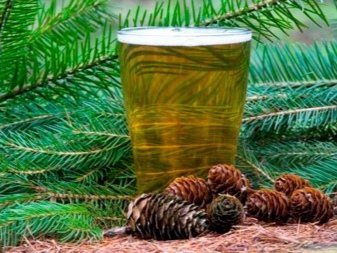
Varieties
There are several varieties of this spruce.
- Glauka is the most popular of them. These ate large in size. The peculiarity of this variety is in its color. The color of the needles is unusual for us: it has a bright turquoise-blue color, sometimes the shade even becomes white. This tree has a very wide crown. This spruce will look great in large gardens. The size of an adult tree (about 30 years old) is 15–20 m in height and more than 4 m in width. The growth is 25–30 cm per year.
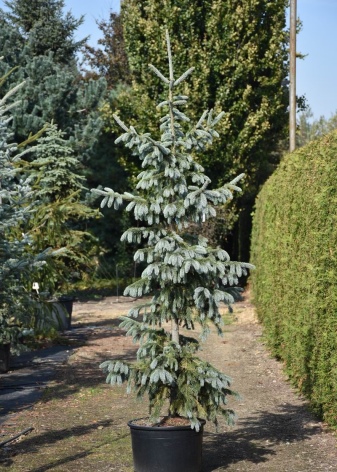
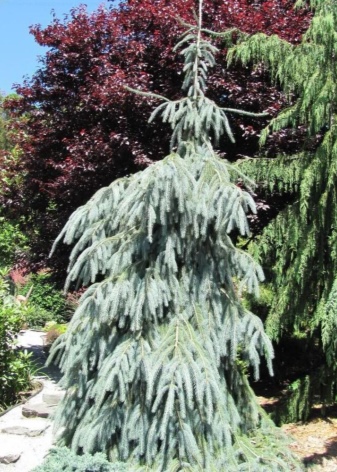
- Talbot. The tree grows very slowly, has the shape of a sphere, per year the growth is about 1–3 cm, the color of the needles gives off a silvery-blue tint.
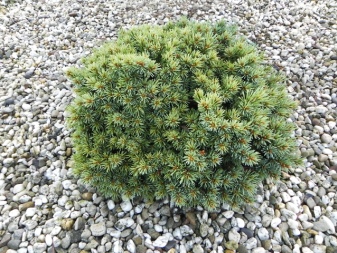
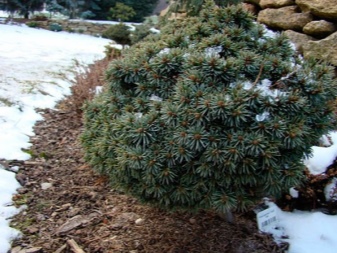
- Snake. An interesting plant that has branches growing in a chaotic manner, the shape of the branches is extraordinary. This spruce is very stable, the root system deeply settles in the soil, and not a single gust of wind can pull it out. The color of the needles is dark blue-green. It grows quite quickly, at 10 years old, an increase of about 2.5 m.
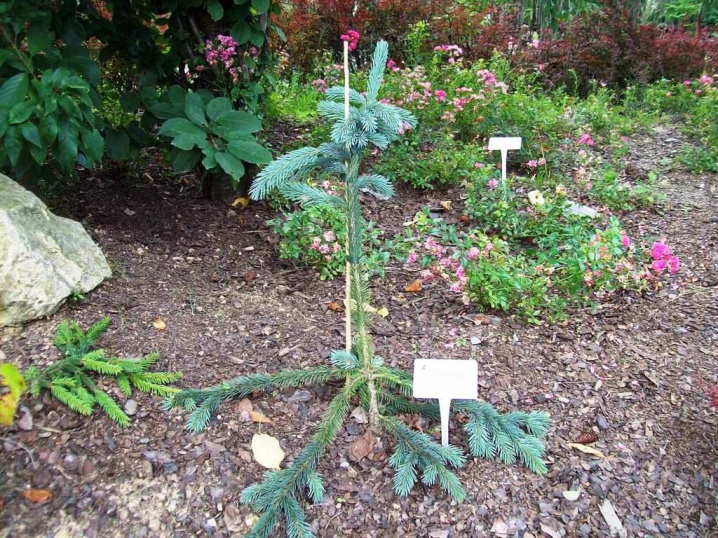
- "Blue Mage". The color of the crown is silvery-blue, especially pronounced in early spring. Annual growth is usually about 15 cm.
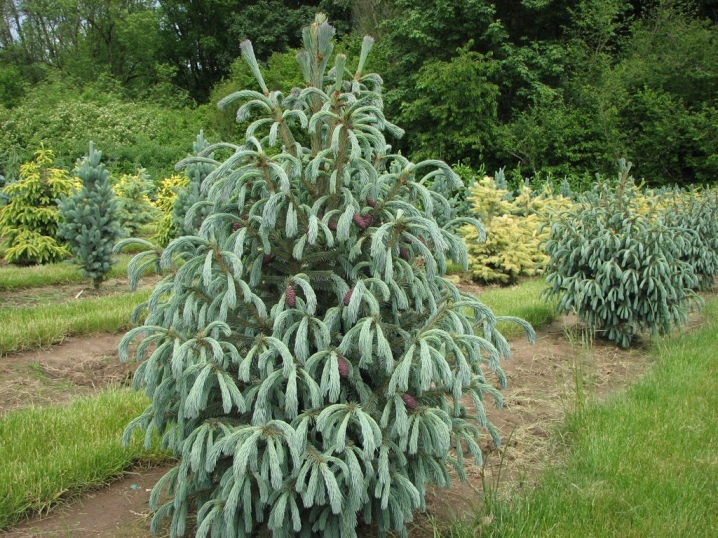
- Bush Lays. This spruce looks very original: there is a feeling that there is a skirt at the bottom of the spruce. It has a very beautiful gray-green color of the crown, which forms a pronounced contrast with the young silver-blue needles in early spring. Such a spruce will look good in any garden or park, it will attract attention. Such a tree looks good when combined with other coniferous and deciduous trees.
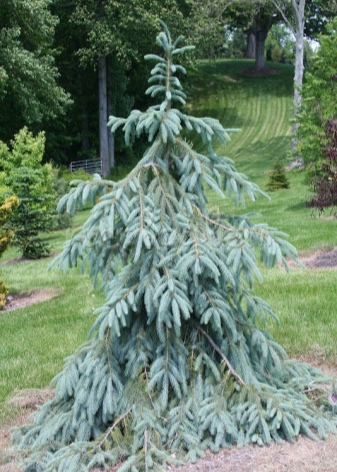
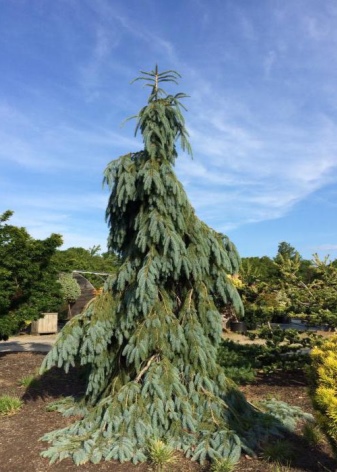
- Pendula. Quite a common variety of conifers, drooping crown, prickly needles. This variety is one of the most beautiful among conifers. It reproduces only by grafting, cannot reproduce in other ways, since it was obtained by crossing different varieties and was the result of a mutation.
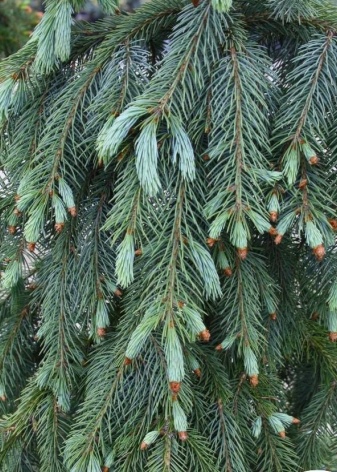

- Blue Harbor. This spruce with a very narrow crown grows more vertically. The needles are comparatively long, to the touch they are more velvety and tender compared to the needles of other varieties of Engelman's spruce. Crown color is very rare aqua color.

How to properly plant a coniferous plant, see the video below.



































































The comment was sent successfully.